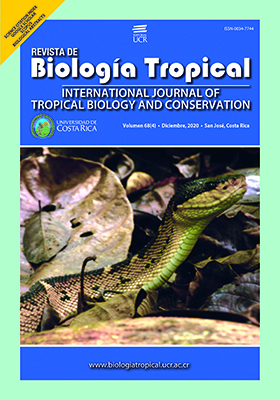Abstract
Abstract. Introduction: Mustelus higmani is one of the shark species most commonly caught in the northeastern region of Venezuela; however, this species has been poorly studied. Objective: to evaluate the age and growth of M. higmani on the basis of the optical analysis of vertebrae. Methods: Between August 2016 and July 2017, the vertebral samples were collected in the fishing port of Juan Griego, Margarita Island. The growth study was based on a sample of 238 individuals, 86 males (24.1-59.5 cm TL) and 152 females (24.4-69.5 cm TL) and the use of growth modeling approaches. Results: The RMI analysis indicated an annual periodicity for the deposition of growth rings. Ages assigned varied between 0 and 5 years in males, and between 0 and 6 years in females. The estimates of growth parameters obtained were L∞ = 60.8 cm TL, k = 0.54 years-1 and t0 = -1.04 years in males; and L∞ = 72.4 cm TL, k = 0.40 years-1 and t0 = -1.31 years in females. The ages at maturity and longevities resulted respectively in 2.5 and 6.4 years for males; and in 2.0 and 8.7 years for females. Conclusions: In general, results indicate that M. higmani has a rapid growth, early maturity, short longevity, and continuous reproduction, characterizing it as a biologically productive species.
Key words: Caribbean; ecology; elasmobranchs; fishery; sharks.
##plugins.facebook.comentarios##

This work is licensed under a Creative Commons Attribution 4.0 International License.
Copyright (c) 2020 Luz Carrillo, Rafael Tavares, Leonardo Sánchez, Carmen Velásquez


